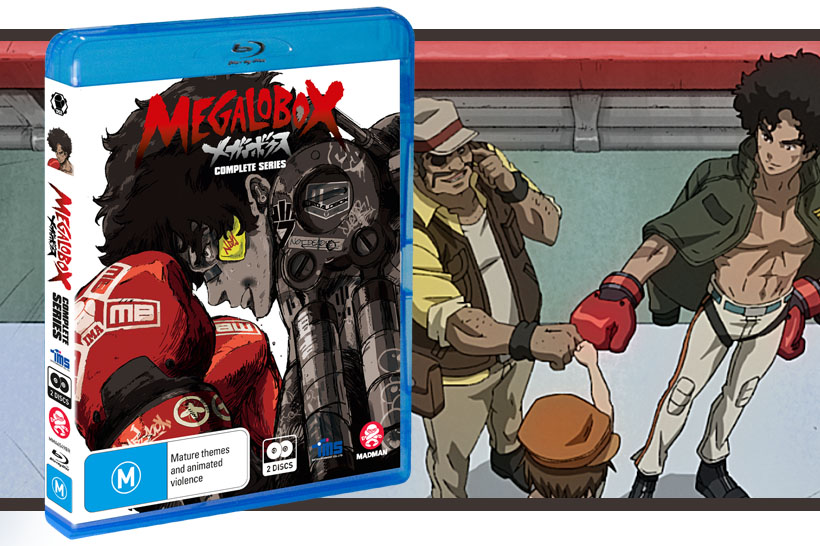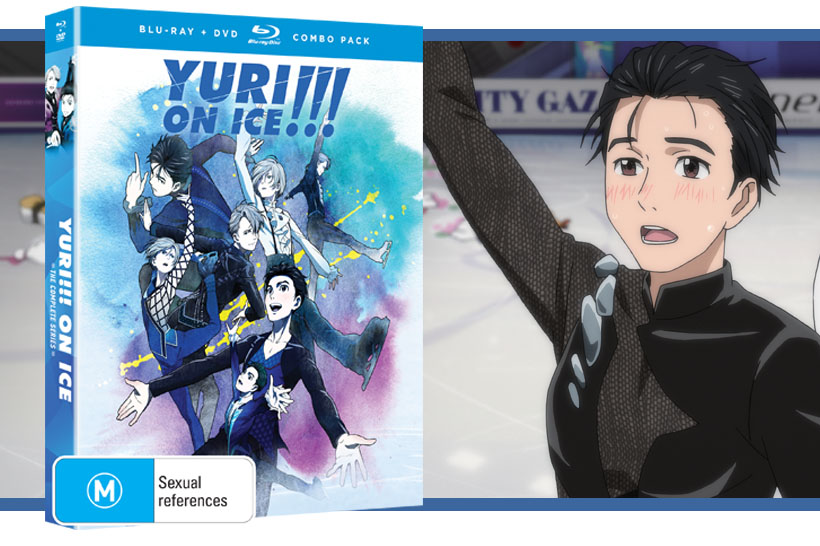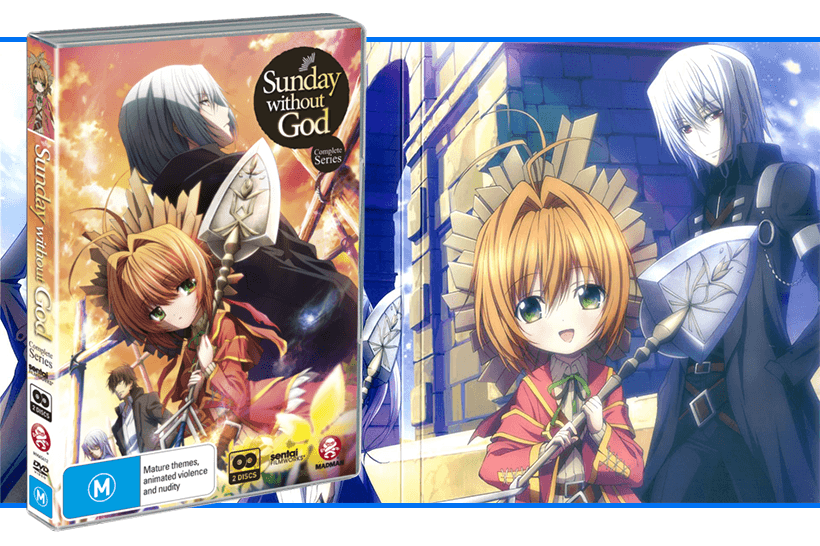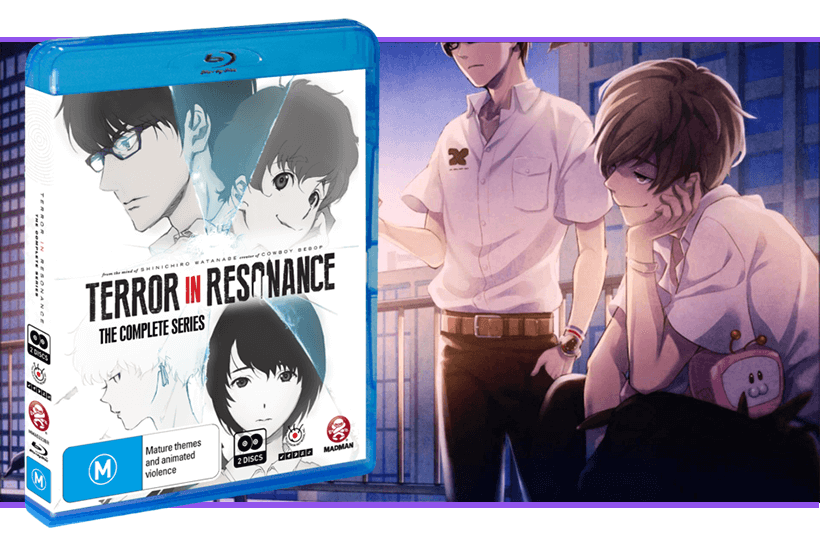JNK.DOG, a young man with no ID and no recollection of his real name or past, is an aspiring megalobox fighter, a popular sport that uses metal exoskeletons to enhance contestants’ boxing skills. JNK.DOG is desperate to experience ‘true’ megaloboxing, but has to fight in fixed illegal underground matches to make ends meet, all while his boxing coach Gansaku Nanbu continues to dangle the prospect of a real match in front of him. But the upcoming Megalonia tournament and a series of events that result in JNK.DOG facing off against the megaloboxing champion Yuri in an underground match may give him the fighting chance he’s been craving. Outfitted with a new ID and having caught the interest of the reigning megalobox champion, the newly named Joe enters Megalonia with one goal in mind: meeting Yuri once more in the ring and getting a taste of true megaloboxing.

Megalobox is a series made to commemorate the 50th anniversary of the boxing manga Ashita no Joe (Tomorrow’s Joe), with characters and concepts re-envisioned to fit a futuristic setting. While I am not familiar with the original manga, it makes complete sense that Megalobox is a commemoration because the entire series feels like a passion project delivered with the utmost care and attention to detail and quality. The series has an eye‑catching animation style that looks like it came straight out of a canonical late 90s anime with all the polish and flash of current productions, a soundtrack that never fails to excite that incorporates hip-hop seamlessly into the musical identity of the show, and a no nonsense but hard-hitting narrative that proves this point further – Megalobox is a show with passion infused into its very core.
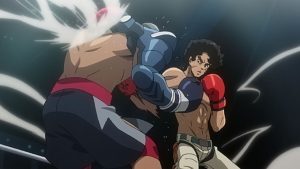
The focus of Megalobox is on Joe, his coach Nanbu and young assistant Sachio as they fight to get to the top of the Megalobox rankings so they can enter Megalonia. With the odds stacked in their favour and Joe entering at the bottom of the rankings, the aptly named ‘Team Nowhere’ plan their way to the top through a mixture of training and showmanship. Since Joe’s megalobox gear isn’t up to the task and he needs to get noticed by the populace and contenders fast to stand a chance of entering Megalonia, Joe begins fighting in professional matches without gear under the title ‘Gearless Joe’. It’s at this point in the series that Megalobox falls into a comfortable routine, depicting Joe and his underdog journey towards the top as he faces off against his opponents, each with their own reasons for taking on a low-ranking, gearless megaloboxer. What keeps things interesting is that each fight is different, with different stakes and emotions in play, and made all the more interesting as challengers shed light on the motives and pasts of familiar characters. While it’s generally obvious what the outcome of a match will be in a sports anime where the main character goes toe-to-toe with an opponent, the matches in Megalobox are electrifying and fun to watch, punctuated by a great score and sound design that keeps things exciting.
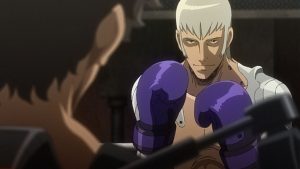
But flashy fights isn’t the only thing Megalobox has to offer, as the series packs a lot of quality content and heart within its 13-episode run. Characters are fun for drastically different reasons – Joe is a determined, band-aid-covered punk with a passion for megaloboxing that is infectious, and despite Nanbu’s sleazy, two-faced nature, he has a lot of heart that remains compelling throughout the series. Megaloboxing champion Yuri is also a great character whose passion for megaloboxing matches Joe’s. Their rivalry is genuinely fun and interesting because it is not built on a petty dislike or hatred, but a genuine desire to face each other as equals and push their limits. There’s an intelligence and complexity to the characters of Megalobox that is also present in the themes of the series. Joe’s story of an underdog fighting his way into the big leagues is accentuated by his gearless fighting style and the disparity between Joe and his fellow megaloboxers, who have top of the market equipment versus his style of fighting without gear based on necessity. This is further emphasised by the disparity between the haves and have-nots, illustrated by the citizens without IDs like Joe who must live on the city outskirts in shanty towns and the Shirato Group executives, those running Megalonia, that emphasise the tournament is open to anyone while restricting entrants to those with IDs. These themes strengthen the underdog story of Megalobox and Joe’s journey to get to Megalonia. While the focus of Megalobox is undoubtedly on Joe and his journey, there still manages to be room to touch upon other heavy topics. This is exemplified by one of Joe’s opponents, the military veteran Aragaki whose story touches on issues like PTSD and the loneliness and lack of support felt by those who return home after war. It’s a meaningful story, and truthfully not one that I expected to find in Megalobox, but welcome all the same.

The animation of Megalobox warrants a discussion in its own right. It has a late 90s animation style, with detailed backgrounds and character designs that feel timeless (yes, I understand how that phrase is contradictory but it’s true). Watching the series was genuinely refreshing and entertaining in part due to the animation style and I hope to see the aesthetic more in future series because I genuinely find myself missing it. It also suits the story being told perfectly, communicating the themes and world of Megalobox in a style that compliments high impact boxing matches but can also carry topics such as PTSD and poverty without causing dissonance between the aesthetic and the issues being touched on.
In terms of special features, Megalobox contains a series of interviews with the producer, director, artists, musicians and more that worked on the series that are telling of the passion felt behind the project, even by those that were not familiar with the Ashita no Joe manga. This illustrates what I mentioned earlier regarding Megalobox feeling like a passion project. There is a lot of great content to be found here, including an interview with those that worked on the soundtrack and sound design discussing why they chose certain tracks for certain scenes, and includes a segment where they compare and contrast a single scene with different tracks to illustrate the thematic differences it causes. These interviews are some of the best I have seen, and contain a lot of other interesting insights such as the original pitch for Megalobox and decisions behind casting voice actors. I thoroughly enjoyed each of them and the peek they offered into the development process.

If I had to describe Megalobox in a brief sentence, I would call it a futuristic boxing anime with an introspective centre. But this doesn’t touch on the exhilarating sound design and soundtrack, the great characters or the passion literally oozing out of every second of the series. Honestly, this is a special anime, and a new favourite of mine – it is satisfying, exciting, and its characters are in my heart and the soundtrack is in my Spotify playlist. Megalobox feels like an anime classic with all the polish of a current production, and deserves your attention.
A review copy was provided by Madman Entertainment to the author for the purpose of this review.
© Asao Takamori, Tetsuya Chiba/Kodansha/MEGALOBOX Project

